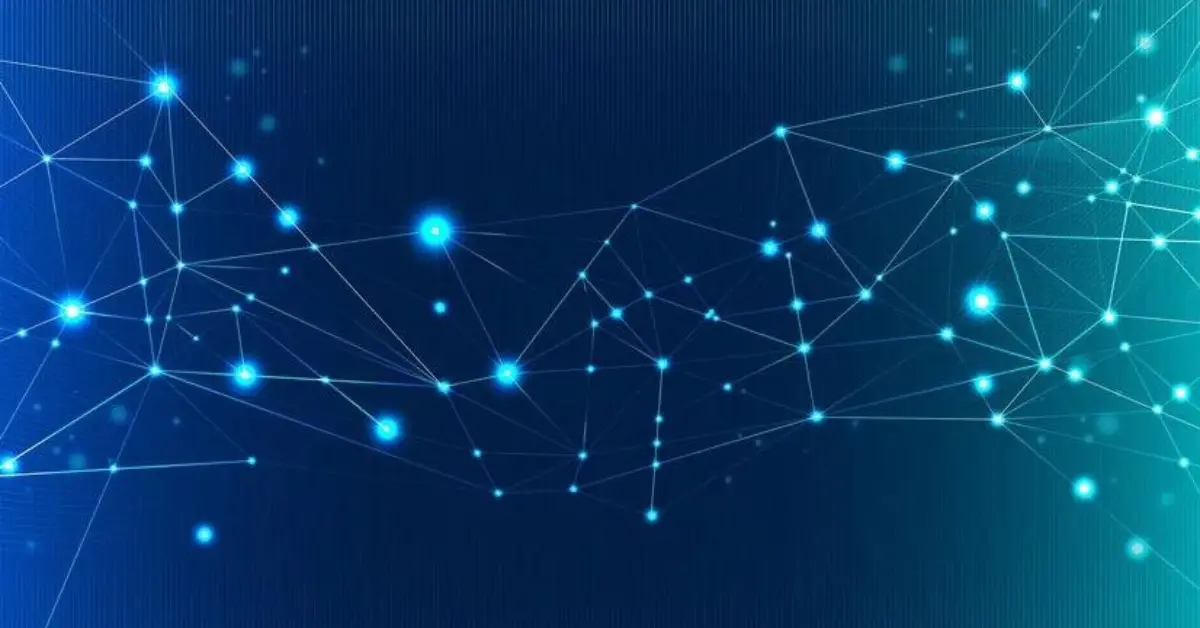Introduction
In the vast landscape of the internet, the Dark Web stands as a mysterious and enigmatic realm, often associated with secrecy and illicit activities. In this article, we will take a closer look at the structure of the Dark Web/Deep Web and unravel the potential risks associated with its use.
Understanding the Dark Web
In the vast expanse of the internet lies a hidden realm known as the Dark Web, shrouded in mystery and intrigue. This clandestine network operates beyond the reach of traditional search engines, accessible only through specialized software. In this article, we will delve into the structure of the Dark Web, its nuances, and the associated risks that come with exploring its depths.
Unveiling the Layers of the Dark Web
- Surface Web vs. Deep Web vs. Dark Web: To comprehend the Dark Web, it’s essential to distinguish it from the Surface Web and the Deep Web. The Surface Web consists of websites indexed by search engines, accessible to anyone. The Deep Web includes password-protected sites and databases not indexed by search engines. The Dark Web, a subset of the Deep Web, requires specific tools like Tor to access.
- The Onion Routing (Tor) Network: The Dark Web relies heavily on the Tor network, employing onion routing to anonymize users. Tor bounces communication through a series of volunteer-operated servers, making it challenging to trace the origin of data. This anonymity is both a boon and a bane, fostering privacy but also enabling illicit activities.
- Marketplaces and Forums: Within the Dark Web, various marketplaces and forums facilitate transactions, often involving illegal goods and services. Cryptocurrencies, particularly Bitcoin, are commonly used for transactions, adding an extra layer of anonymity for users.
Risks Associated with the Dark Web
- Illegal Activities: The Dark Web is infamous for hosting marketplaces selling drugs, counterfeit currency, stolen data, and hacking tools. Engaging in such transactions exposes users to legal repercussions.
- Cybersecurity Threats: Navigating the Dark Web poses significant cybersecurity risks. Malicious actors may exploit vulnerabilities in users’ systems, potentially leading to identity theft, financial loss, or unauthorized access to personal information.
- Scams and Frauds: The anonymity of the Dark Web creates an environment ripe for scams and frauds. Users may encounter false promises, fake services, or phishing attempts designed to compromise sensitive information.
- Law Enforcement Monitoring: While the Dark Web offers a degree of anonymity, law enforcement agencies actively monitor it to combat illegal activities. Users may find themselves under scrutiny, facing legal consequences for involvement in illicit transactions.
Conclusion – Navigating the Shadows
The Dark Web remains an enigma, with its complex structure and associated risks. While it provides a platform for privacy advocates and whistleblowers, it also harbors illegal activities that can have severe consequences for users. It is crucial for individuals to approach the Deep Web with caution, understanding the potential risks involved and taking necessary precautions to safeguard themselves from the shadows that lurk within.
Structure of the Dark Web
The Dark Web is a part of the internet that is intentionally hidden and accessible only through specific software, configurations, or authorization. It is important to note that the Deep Web is often associated with illegal activities, but it also serves legitimate purposes, such as providing anonymity for users in repressive regimes, facilitating secure communications, and protecting privacy.
The structure of the Dark Web includes the following elements:
- Surface Web vs. Deep Web vs. Dark Web:
- Surface Web: The portion of the internet that is indexed by search engines and accessible to the general public.
- Deep Web: The part of the internet that is not indexed by search engines. It includes content behind paywalls, private databases, and other restricted access areas.
- Dark Web: A small, intentionally hidden part of the Deep Web that requires specific tools or authorization to access.
- Access Mechanisms:
- Onion Routing: The most common technology used for anonymous access to the Dark Web is Tor (The Onion Router). Tor routes internet traffic through a series of volunteer-operated servers to conceal a user’s location and usage from network surveillance or traffic analysis.
- Websites and Marketplaces:
- Deep Web websites typically have “.onion” domain extensions.
- Marketplaces on the Dark Web facilitate the exchange of goods and services, often involving illegal or illicit activities, such as drug trafficking, hacking tools, counterfeit documents, and more.
- Forums and Communities:
- Deep Web forums and communities provide a platform for users to discuss various topics, including hacking techniques, security vulnerabilities, and illegal activities.
- Cryptocurrencies:
- Security and Anonymity:
- The Deep Web places a strong emphasis on security and anonymity. Users often take precautions such as using pseudonyms, employing encrypted communication channels, and avoiding revealing personal information.
- Challenges for Law Enforcement:
- The encrypted and anonymous nature of the Deep Web poses challenges for law enforcement agencies attempting to monitor and combat illegal activities conducted in these hidden spaces.
It’s crucial to recognize that while the Dark Web is associated with illicit activities, it also serves legitimate purposes for individuals seeking privacy and security in their online communications. Accessing the Dark Web should be approached with caution, as engaging in illegal activities can have serious legal consequences.
Risks Associated with the Dark Web
The Dark Web, a part of the deep Web, is a hidden and encrypted network that is intentionally concealed and requires specific tools, such as Tor, to access. While not all activities on the Dark Web are illegal, it is notorious for hosting various illicit and harmful activities. Here are some risks associated with the Dark Web:
- Illegal Activities:
- Cybercrime: The Deep Web is a hub for cybercriminal activities, including hacking, identity theft, and the sale of stolen data.
- Drug Trafficking: Illegal drug trade is prevalent on the Deep Web, with various marketplaces facilitating the purchase of drugs using cryptocurrencies.
- Weapon Sales: Some marketplaces on the Deep Web enable the illegal trade of firearms and other weapons.
- Human Trafficking: Human trafficking networks may operate in the shadows of the Dark Web.
- Fraud and Scams:
- Financial Fraud: Dark Web forums often contain information on how to conduct financial fraud, including credit card fraud, bank fraud, and other scams.
- Fake Credentials: Stolen personal information, including passports and driver’s licenses, is often bought and sold on the Deep Web for identity theft purposes.
- Malware and Exploits:
- Malware Distribution: Malicious software, including ransomware and other types of malware, can be bought and sold on the Deep Web.
- Exploit Marketplaces: Vulnerabilities and exploits for software and systems may be traded, leading to potential cyber threats for individuals and organizations.
- Privacy Concerns:
- Data Breaches: Stolen data from large-scale breaches may find its way onto the Deep Web, compromising the privacy of individuals.
- Dark Web Surveillance: Law enforcement agencies monitor the Deep Web for criminal activities, but there’s also a risk of individuals being tracked or monitored by malicious actors.
- Extremist and Illegal Content:
- Terrorist Activities: Some extremist groups may use the Deep Web to communicate, share propaganda, and coordinate activities.
- Illegal Content: The Deep Web may host illegal pornography, including child exploitation material, which poses significant ethical and legal concerns.
- Social Engineering and Espionage:
- Social Engineering: Criminals on the Deep Web may engage in social engineering attacks to manipulate individuals into divulging sensitive information.
- Corporate Espionage: Trade secrets and proprietary information may be traded on the Deep Web, posing a threat to businesses.
It’s important to note that while the Dark Web presents these risks, not all activities on the Dark Web are illegal or malicious. Some users may access it for legitimate privacy reasons or to bypass censorship in certain countries. However, individuals should exercise caution and be aware of the potential risks associated with engaging in activities on the Dark Web.
Law Enforcement Challenges
Law enforcement faces formidable challenges in combatting illicit activities on the Deep Web. The hidden nature of this online realm poses unique obstacles that demand innovative strategies and tools for effective policing.
- Anonymity and Encryption: One of the primary hurdles for law enforcement is the sophisticated use of encryption and anonymity tools by Deep Web users. Navigating through layers of encryption to identify and trace criminal activities becomes a complex task.
- Cryptocurrency Transactions: Deep Web transactions primarily involve cryptocurrencies, making it challenging for authorities to trace the flow of funds. Bitcoin and other digital currencies provide a level of financial anonymity, hindering traditional investigative methods.
- Global Jurisdictional Issues: The borderless nature of the Deep Web raises jurisdictional challenges for law enforcement. Coordinating efforts across international boundaries becomes essential, requiring collaborative initiatives to address cross-border criminal activities effectively.
- Proliferation of Cybercrime: The Deep Web serves as a breeding ground for various cybercrimes, including hacking, identity theft, and the sale of stolen data. Law enforcement agencies must adapt to the ever-evolving landscape of cyber threats and deploy proactive measures to combat these crimes.
- Deep Web vs. Dark Web: Distinguishing between the Deep Web (legitimate, unindexed content) and the Deep Web is crucial for law enforcement. Understanding the nuances helps in focusing resources on combating illegal activities rather than infringing on privacy rights.
- Technological Advancements: As technology on the Deep Web evolves, law enforcement must keep pace. Staying ahead of emerging technologies used by cybercriminals is essential to effectively investigate and counter illicit activities.



